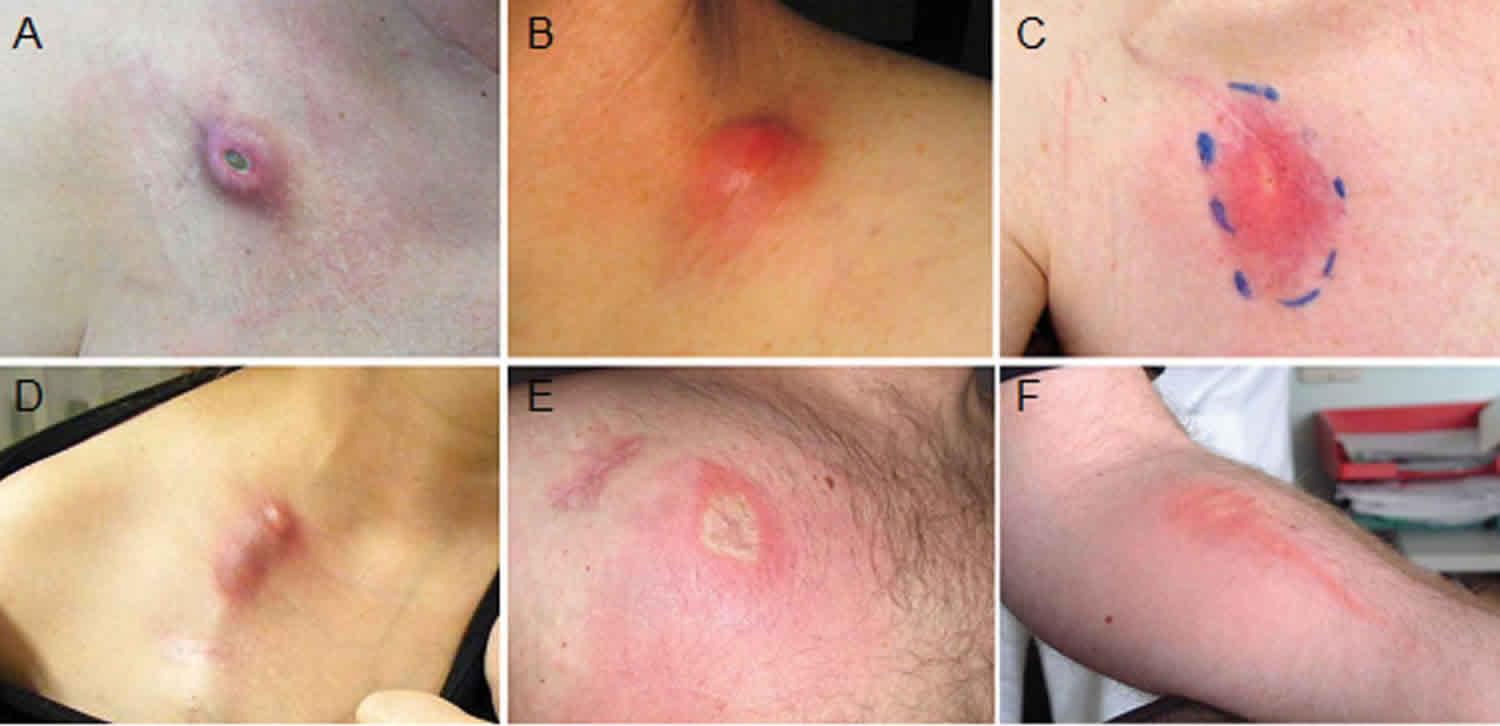What causes lumps under the skin
Skin lumps are any abnormal bumps or swellings on or under the skin. Most skin lumps and swellings are benign (not cancerous) and are harmless, especially the kind that feel soft and roll easily under the fingers (such as lipomas and cysts).
Skin colored lumps and bumps may be difficult to distinguish one from another. It is helpful to consider body site, location within the skin, size, consistency and morphology. Some common lesions are described here.
First, a reminder about terminology in dermatology.
- A papule is a small palpable lesion (less than 0.5 cm)
- A nodule is a larger rounded lesion
- A plaque is a flat palpable lesion
- A cyst is fluctuant because it contains fluid or semi-fluid material
A lump or swelling that appears suddenly (over 24 to 48 hours) and is painful is usually caused by an injury or an infection.
Common causes of skin lumps include:
- Lipomas, which are fatty lumps under the skin
- Enlarged lymph glands, usually in the armpits, neck, and groin
- Cyst, a closed sac in or under the skin that is lined with skin tissue and contains fluid or semisolid material
- Benign skin growths such as seborrheic keratoses or neurofibromas
- Boils, painful, red bumps usually involving an infected hair follicle or group of follicles
- Corn or callus, caused by skin thickening in response to continued pressure (for example, from shoes) and usually occurring on a toe or foot
- Warts, caused by a virus that develops a rough, hard bump, usually appearing on a hand or foot and often with tiny black dots in the bump
- Moles, skin-colored, tan, or brown bumps on the skin
- Abscess, infected fluid and puss trapped in a closed space from which it cannot escape
- Cancer of the skin (colored or pigmented spot that bleeds easily, changes size or shape, or crusts and does not heal)
Lumps under skin or bumps that are cancerous are typically large, hard, painless to the touch and appear spontaneously. The mass will grow in size steadily over the weeks and months. Cancerous lumps that can be felt from the outside of your body can appear in the breast, testicle, or neck, but also in the arms and legs.
One type of cancerous lump that can form almost anywhere in the body is called adult soft tissue sarcoma. The soft tissues of the body include the muscles, tendons (the bands of fiber that connect muscles to bones), fat, blood vessels, lymph vessels, nerves and the tissues around joints.
Most frequently, though, adult soft tissue sarcoma develops in the legs, arms, chest or the area behind the abdomen called the retroperitoneum. Most commonly, soft tissue sarcomas feel like masses or bumps, which may be painful. If the tumor is in the abdomen, it may produce nausea or a sensation of fullness as well as pain.
Adult soft tissue sarcoma is rare. Among adults, they represent less than 1 percent of all cancers. It’s important to talk with your doctor about any lumps that are larger than two inches (about the size of a golf ball), grow larger, or are painful regardless of their location. Tell your doctor about new lumps or other symptoms that cannot be explained or that don’t go away in a few weeks.
Skin lumps from an injury can be treated with rest, ice, compression, and elevation. Most other lumps should be looked at by your health care provider before you try any home treatments.
See your doctor if there is any unexplained lump or swelling.
You should also see your doctor if:
- skin lumps change or worsen in appearance, or last for a long time
- you are in pain or they cause discomfort
- you don’t know the cause of the bumps
- you suspect you have an infection or skin cancer
What to expect at your doctor’s office visit
Your doctor will perform a physical exam and ask about your symptoms, including:
- Where is the lump?
- When did you first notice it?
- Is it painful or growing larger?
- Is it bleeding or draining?
- Is there more than one lump?
- Is it painful?
- What does the lump look like?
- What other symptoms do you have?
Your doctor may prescribe antibiotics if you have an infection. If cancer is suspected or the provider cannot make a diagnosis by looking at the lump, a biopsy or an imaging test may be done.





